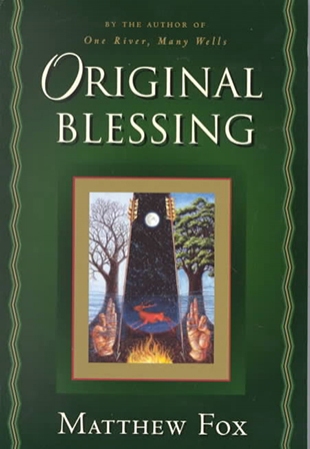"Beauty has to do with seeing all of life as blessing, with returning blessing for blessing, with forging blessing of pain and suffering and tragedy and loss. Beauty needs to be made and remade. It is the vital work of the artist within ourselves. Beauty needs to be forged between warring parties, whether these war within us or around us. Beautiful is what a movement of oppressed people is about, as in the slogan, 'Black is beautiful,' or Gandhi's statement, 'Real beauty is my aim.' Beauty is what the royal person is about, recognizing it and then birthing it. Beauty is what our lives are about. What the scriptures call doxa or glory can rightly be translated as 'beauty.' God and God's Son are ultimately attractive and alluring because of their beauty. True beauty and truthful beauty, as Whitehead points out, 'is a discovery and not a recapitulation.' We have lost beauty as a theological and educational category in the West to the extent that we have lost the dialectical birthing process, the artistic energy. For beauty is born and not made. There lies its marvel, its surprise. But all experience of beauty is experience of cosmic wholeness, of harmony. Beauty is a microcosmic intuition of a macrocosmic reality: Blessing does prevail, life and death, pain and joy, dark and light, conflict and resolution of conflict, commitment and letting go, are all connected.
"If grace pours all beauty into the soul, then it is clear that the dialectical or creative person is one who at times feels inundated by beauty, overcome by it, barely able to tolerate its power and brilliance. When we touch the artist in ourselves we touch this empty channel, the open conduit for the spirit to work through. We ourselves become like the universe we have learned to love, transparent and diaphanous. Beethoven described the experience this way in a conversation with Bettina von Arnim: 'Every real creation of art is independent, more powerful than the artist himself, and returns to the divine through its manifestation. It is one of the man only in this, that it bears testimony to the meditation of the divine within him.' We become instruments of divine grace and beauty, and that is enough for the Holy Spirit to spiral beauty back into the world through us. It is our lives, more than any particular work of art in our lives, that most puts us in touch with the communion of saints which is the communion of beauty–birthers. If we are returning harmony back to the universe then we are truly co-creators with the God of the cosmos.
"I believe that beauty is better understood as an adjective than as a noun. Rather than pursuing the question, What is beauty? I believe it is more useful to ask the question, "What are beautiful experiences you have had? And how can we forge more beauty from our common sharing of this planet? An inevitable consequence of asking such a question is the truth that beauty is simple and it is shareable. My most recent beautiful experience was taking a break from writing this book to walk in newly fallen snow, the first real snowfall of this season. What beauty! Sticking to all the branches of the trees, covering all of creation under a common blanket of white and warmth. Think of how the cosmos yearned for twenty billion years to show off this one day of a snowfall's beauty! In the microcosmic experience of a local snowfall's beauty there lies a hint that the entire effort of the universe has been and continues to be one of cosmic beauty and harmony. And one returns to the discord refreshed and made a believer, one who wishes to contribute to the ongoing beatifying of the universe. Cynicism dies. Hope reigns because beauty is possible. For beauty is."
Back to reading a full review of this book.
